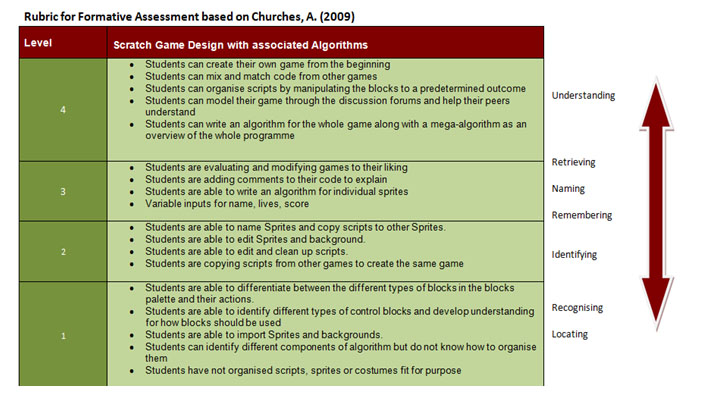I was very pleased with the effort most students showed towards learning how to programme in Scratch. It would be the first time this year that all students were engaged for virtually 100% of the time. Towards the end of the project, 3 students’s started to lose motivation and interest with building their game. However, these 3 students were also failing in their other classes due to absenteeism, changing courses half way through the year and a lack of interest.
My observations demonstrated to me how well students responded to receiving immediate feedback through the Scratch programme. The fact that they could see the results of their actions easily persuaded them to look for solutions to bugs and problem solving, as stated by Utting et al. (2010).
The Rubric I designed based on Churches, (2009) Bloom’s Digital Taxonomy, (revised from Bloom’s original Taxonomy) was useful for formative assessment and gave me a benchmark to evaluate students understanding. At the end of the five weeks 80%of students were quite comfortable with mixing and matching code to create their own unique games. From formative observations and a student survey, all students had moved to Level 3 of the rubric. Currently students are at varying abilities with regards to Level 4.
Although they are yet to be formally assessed, I am confident all students bar three, will pass Achievement Standard 91075 – Construct a computer programme for a specified task.




